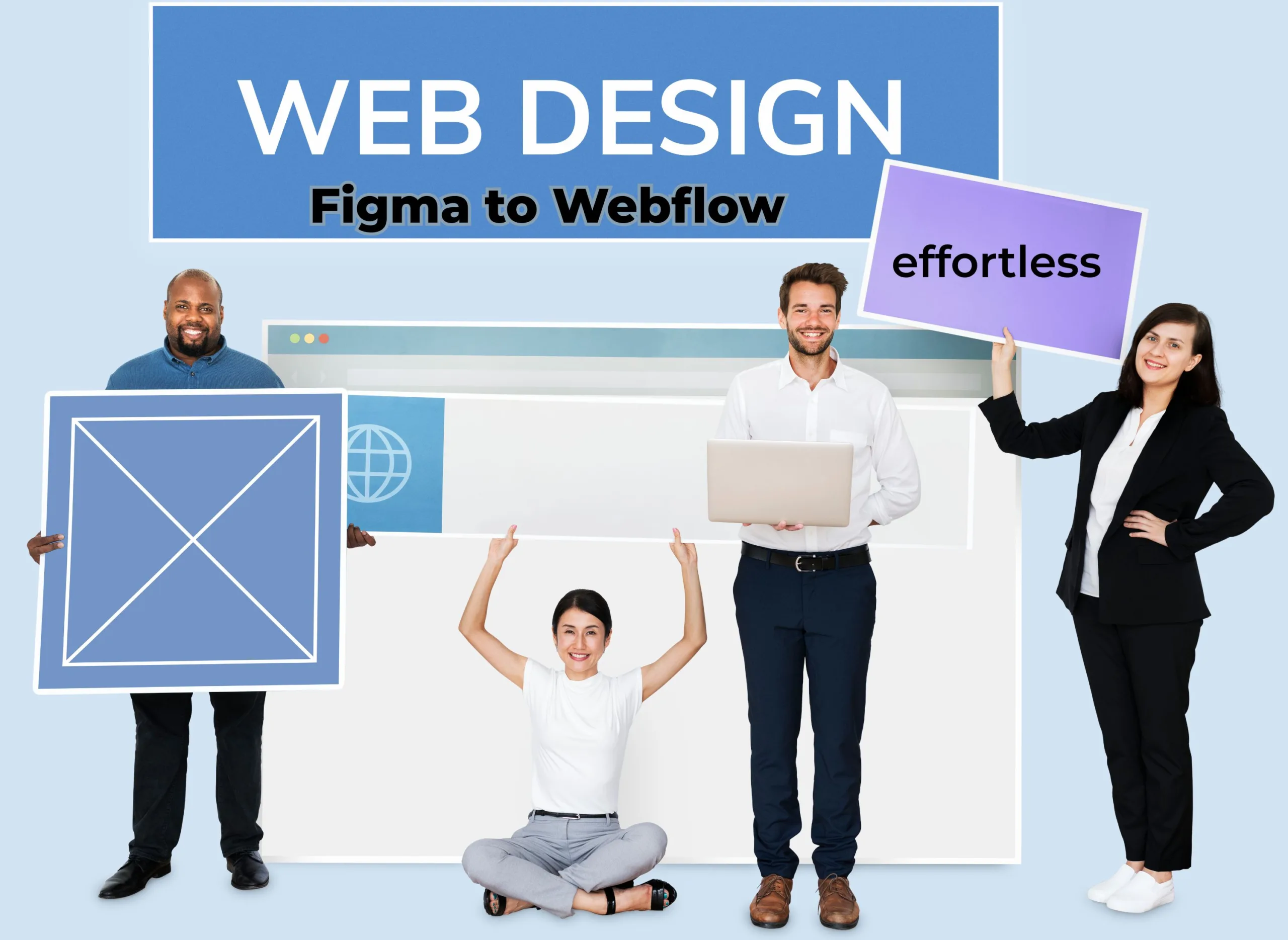From Figma to Webflow: Creating Websites Made Effortless

In today’s digital age and e-commerce world, a website is the face of your online presence. It’s the first thing people see when they search for your business or personal brand. To make a strong first impression, you need a website that not only looks great but functions seamlessly. This is where the dynamic duo of Figma and Webflow steps in, making website creation an effortless endeavor.
The Power of Figma
Figma, an industry-leading design tool, has revolutionized the way designers create web layouts and user interfaces. With its intuitive and collaborative features, it has become a go-to choice for designers worldwide. Its user-friendly interface allows designers to create stunning visuals while maintaining a user-centered approach.
Webflow – A Game Changer
Webflow, on the other hand, is a powerful web development platform that allows you to turn design into a fully functional website without the need for coding. It provides a unique blend of design and development capabilities, making it an ideal choice for designers who want full control over their creations. Furthermore, you should visit the following articles on Webflow for better understanding:
c. Webflow CMS
The Seamless Integration From Figma to Webflow
One of the most significant advantages of using Figma and Webflow is their seamless integration. Designers can easily export their Figma designs to Webflow, ensuring that the design remains intact during the transition. This collaboration enhances the efficiency and productivity of the entire web design process.

Starting Your Project
To get started, you need to create a Figma project. Once you’re in Figma, you can set up your creative workspace by organizing your design elements and assets. This initial step is crucial in ensuring a smooth workflow throughout the project.
Designing in Figma
Figma offers a plethora of design tools to create web layouts, including vectors, images, and text elements. It allows you to work on your design collaboratively, with real-time editing features, making it easy to communicate and brainstorm with team members.
Figma to Webflow Transition
After creating your design in Figma, it’s time to transition to Webflow. The process is straightforward, and you’ll be amazed at how your design seamlessly transfers into a fully functional website in Webflow.
Building in Webflow
Webflow offers an extensive set of features for building websites, including responsive design options and custom interactions. You can create complex web animations and effects without writing a single line of code. Moreover, after creating your website, you should also promote your website using social media marketing tools.
The Beauty of Responsiveness
In the mobile-centric world we live in, responsive web design is paramount. Figma and Webflow make it easy to ensure your website looks and functions perfectly on all devices, from desktops to smartphones.
The SEO Advantage
Figma and Webflow also offer a significant advantage in terms of search engine optimization. You can easily optimize your website for search engines, improving its visibility and ranking. For further information on SEO, you may read the articles about “On Page SEO” and “Advance SEO Tools“. You may also use the tools offered by Google, like Google Analytics to see the progress of your website.

Collaborative Workflows
Collaboration is key in web design, and both Figma and Webflow provide tools for teams to work together efficiently. Designers and developers can collaborate seamlessly, ensuring that the design and development process is a breeze.
Case Studies
To further illustrate the capabilities of Figma and Webflow, let’s take a look at some real-world examples. Many businesses have successfully used these tools to create beautiful, functional websites that have driven results.
Troubleshooting and Tips
No journey is without its challenges. In this section, we’ll discuss common issues designers may face while using Figma and Webflow and provide tips and solutions to overcome them.
The Future of Web Design
The world of web design is constantly evolving, and Figma and Webflow are keeping pace. They continue to adapt and improve, providing designers with cutting-edge tools and features to create the websites of the future.

Conclusion
In conclusion, transitioning from Figma to Webflow is a game-changer for web designers. The seamless integration, ease of use, and powerful features of these two tools make website creation a breeze. Whether you’re a seasoned designer or just starting, Figma and Webflow are a winning combination.
You can also contact the tech team at NasTech24 for SEO services and much more. We will provide you or your company with complete IT services, including website development and digital marketing.
FAQs
1. Is Figma free to use?
Yes, Figma offers a free plan with limited features. However, for advanced capabilities, you may consider their paid plans.
2. Can I export Figma designs to other web development platforms?
Figma is primarily designed for easy integration with Webflow. While you can export designs to other platforms, the seamless transition may not be as smooth.
3. Is Webflow suitable for beginners?
Webflow is beginner-friendly, but some coding knowledge can be helpful for more advanced customization.
4. How can Figma and Webflow improve SEO?
Figma and Webflow offer tools and features for optimizing your website’s SEO, including meta tags and structured data options.
5. Are there any alternatives to Figma and Webflow?
Yes, there are alternative design and development tools, but the unique collaboration and integration between Figma and Webflow make them a compelling choice.



